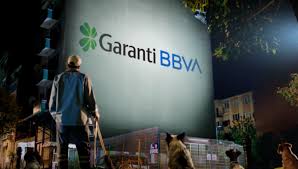Industrial Production: Will acceleration continue?
Industrial Production (IP) in May contracted by 20% yoy in calendar adjusted terms, which signals a gradual recovery after the sharp drop of 31% in April. The month-on-month recovery at 17% also proved to be the strongest monthly increase historically. We maintain our GDP growth estimate at 0% for 2020.
Key points
Retail sales remained relatively weak by contracting at 17% yoy, which corresponds to a monthly pick-up of 4%.
Since May data carry the negative impact of calendar days, the unadjusted figures showed deeper contractions, which will be reversed in June.
Our Big Data proxies and other high frequency indicators have already signaled, a stronger recovery pattern is on the way since mid-June.
Our monthly GDP indicator nowcasts a yearly GDP growth rate of -8.2% (86% info) in May and -7.7% in June (52% info) which is followed by a faster recovery in July with -5% (33% info).
Supply side effects push the core prices on the upside
The second consecutive surprising upside deviation stemmed from the core prices, which increased by 1.9% compared to our only 0.4% estimate, leading the annual figure to jump up to 11.6% from 10.3% in May. Despite the favorable seasonal factors and still weak demand, supply side effects due to the low capacity in certain sectors seem to bring upside price adjustments across-the-board, but especially in the sub-segments sensitive to the exchange rate pass-thru. The highest contribution came from the transportation group, which was followed by the clothing prices (which rose in monthly terms despite the negative seasonality).
Services prices also increased with an annual figure rising to 11.8%, led by all the sub-indices, except for the rent prices. Besides, the recent correction in oil prices also weighed on the headline in June, where annual energy inflation accelerated to 9.1% from 5.2%, which we expect to stabilize from now onwards assuming the oil prices to stay at the current levels. On the other hand, food inflation came below its seasonal average with -1.7% mom, which still keep its annual figure steady at 12.7% as a result of the unfavorable base effects.
Domestic producer prices, which increased by 0.7% mom, confirm the relatively low but still alive cost push factors on the correction in commodity prices, disruptions in production and the recent tax adjustments. Looking ahead, the negative output gap and energy prices could remain the supportive factors but the high inertia, potential fast recovery in demand factors, volatile food prices and the exchange rate prove to be the upside risks.
Worsened core inflation outlook will decelerate the expected disinflation path
Still relatively low energy prices and negative output gap will help to satisfy a disinflation path this year. Though, faster than expected correction of the oil prices since May, the rigidity of the core prices due to the increased unit costs led by the supply side effects of the pandemic and the potential fast recovery in domestic demand will decelerate the initially expected path. So, risks on our current year-end inflation forecast (8.5%) are clearly on the upside, which would more likely keep the Central Bank to stay on hold until being sure about the inflation dynamics during 3Q.
Follow our English language YouTube videos @ REAL TURKEY: https://www.youtube.com/channel/UCKpFJB4GFiNkhmpVZQ_d9Rg
And content at Twitter: @AtillaEng
Facebook: Real Turkey Channel: https://www.facebook.com/realturkeychannel/
